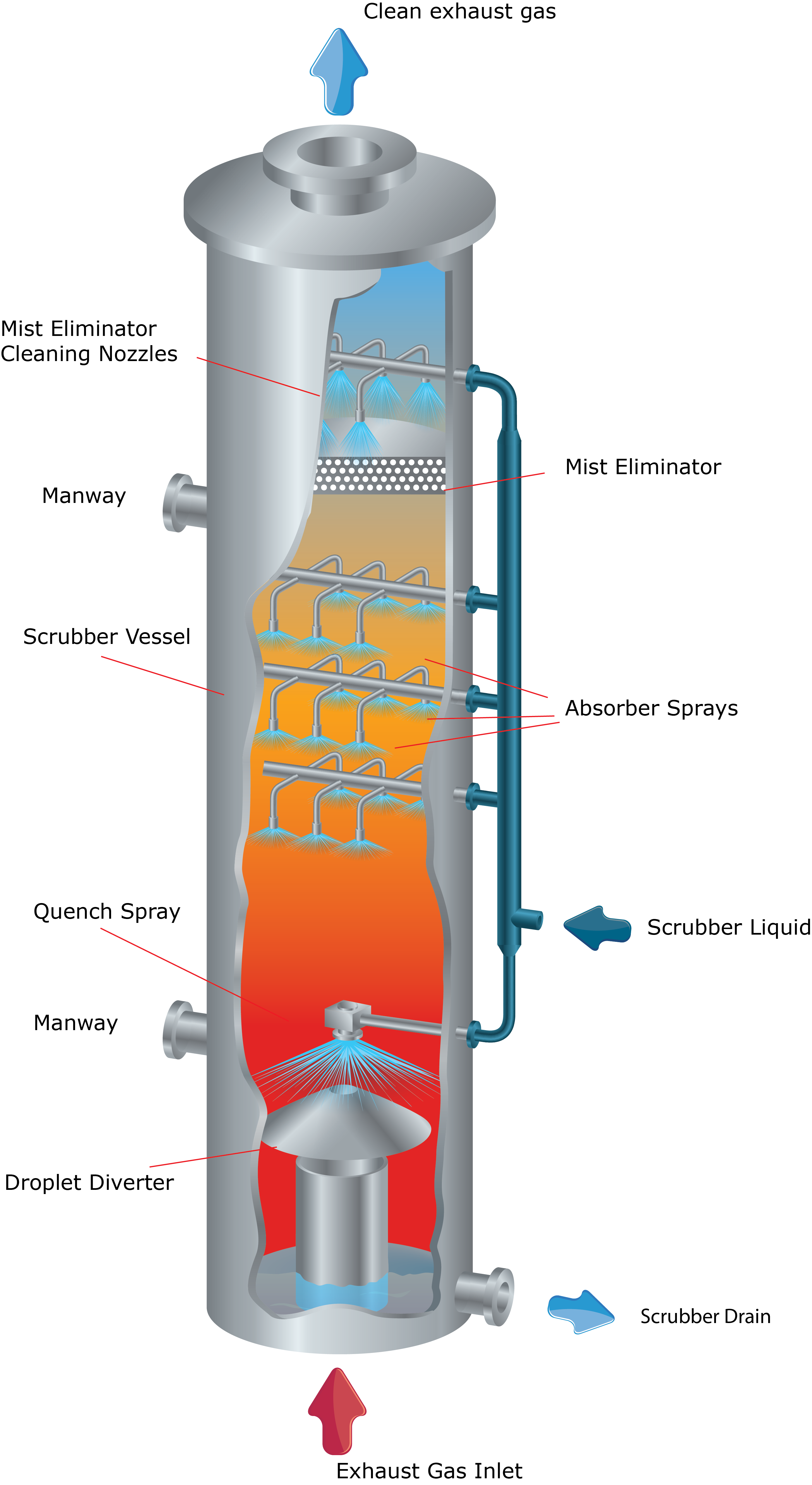Nozzles for gas scrubbing
Droplet size and absorption rate
For any given volume of spray the smaller the average droplet size the larger the overall surface area will be. The larger the contact area with the gas then the greater the absorption rate. So it would follow that the finest spray possible
would be the most efficient. In theory this is true, but in practice other factors come into play.
Residence time
 Another
other factor that affects absorption rate is the length of time the droplets remain within the gas flow. Obviously the longer they remain resident within the gas flow the more opportunity there exists for the necessary reactions to occur.
Another
other factor that affects absorption rate is the length of time the droplets remain within the gas flow. Obviously the longer they remain resident within the gas flow the more opportunity there exists for the necessary reactions to occur.
The length of residence really depends upon the geometry of the chamber, the speed of the gas flow and the weight (size) of the droplets. Obviously the faster the gas is flowing the less time the reacting fluid droplets will have to act. Similarly, the
smaller the droplets are the faster they will be swept along by the gas. This being the case we can see that very fine droplets could actually have less chance of reacting with the gas.
Surface area present
A nozzle will deliver a roughly uniform number of droplets per second. In a stable gas scrubbing application, these droplets will be removed from the system at an equal rate either by condensation, evaporation or being carried away in the gas exhaust.
So at any one time there will be a set volume of scrubbing fluid present in the gas flow between the injection point and the exhaust. With knowledge of the droplet size this volume present can be translated to a surface area of reagent
present. The surface area present is a good indication of how well the spray will react and how much gas will be removed.
For any given set flow rate of sprayed fluid the total surface area of fluid present in the scrubber will be a function of droplet size and residence time. As droplet size falls the total surface area increases, but at the same time residence time
will also fall as smaller droplets move faster and spend less time in the scrubber. It follows that there is an optimum point at which any further decrease in droplet size will actually decrease the effectiveness of the gas scrubber.
Nozzle selection
For many scrubbing applications, our TF range of spiral nozzles offer an excellent combination of good atomisation as well as containing some larger droplets to help carry the spray into a gas flow. Further to this the TF range is clog-resistant
and so can readily spray fluids with a high particle content. The range is further enhanced by the ST abrasion-resistant version. We even have a half spiral nozzle which produces a half cone pattern that was specifically designed to be
positioned on the outer ring in large scrubber towers so that spray is directly inwards away from the wall.